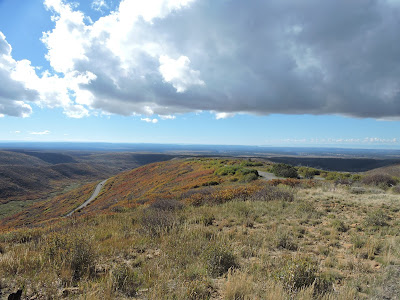 |
San Juan colors |
We had seen the Aspen colors from the tops of the mesa in
Mesa Verde. Today we traveled the San Juan Mountain scenic byway and got to see
them close up. Our timing was pretty good – most of the Aspen were at peak
colors. It was totally awesome! Our only wish was a little more sun – it was a
fairly cloudy day, so that dulled the colors out. We stopped for the evening in
Chalk Creek Campground near
Buena Vista. We found a great dinner place in Buena Vista: Jan’s Restaurant,
family dining with mostly handmade fare.
How to summarize the trip? As usual, the Utah parks were
great, but crowded – always amazed at the variety of rocks and sandstone. We
saw quite a few National Monuments around Indian dwellings: pit houses to
pueblos, which had quite a variety of architectures depending upon when and
where they were built. We gained a much better appreciation of desert plants
and animals at the Desert Botanical Gardens, and Arizona – Sonora Desert Park
(a key highlight of the trip). Almost sad to go home, but the weather will be
changing pretty quickly and we lucked out for the most part with weather on this
trip. If you'd like to see more pictures and video, there is a 15 minutes video available on youtube at https://youtu.be/bH0SFJNxAIQ


















































